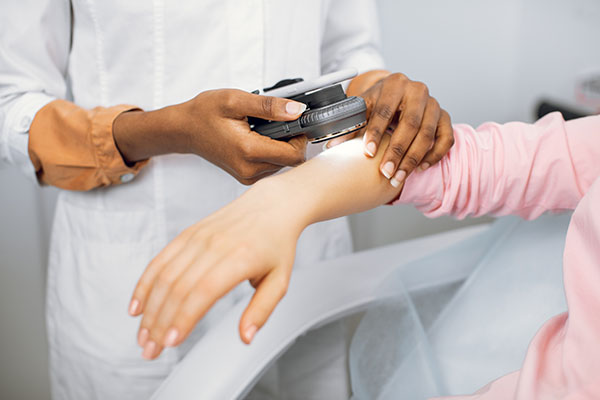
Your skin is your body's largest organ — and it does so much for you. It protects you from the outside world, including bacteria and chemicals. It also keeps your body at a safe temperature, warming you up when it's cold and cooling you down when it's warm.
Because your skin is nearly everywhere on your body, it is also exposed to dangerous elements, particularly ultraviolet (UV) rays. And if you don’t take steps to protect your skin, you run the risk of developing skin cancer. Skin cancer is the most common form of cancer in the US. Melanoma, which is a specific type of skin cancer, is the most deadly.

May is Skin Cancer Awareness Month, and the first Monday in May is often referred to as Melanoma Monday. It's a perfect time to brush up on your skin cancer knowledge, including how to prevent skin cancer and what signs to look out for.
Skin and Skin Cancer Basics
When you wash your face, apply lotion, or even just look in the mirror, you probably already pay attention to your skin. But have you ever really thought about what makes up this organ that covers most of your body?
Your skin is made up of two main layers — the epidermis (the outermost layer) and the dermis (the innermost layer).
Because your epidermis is more exposed, skin cancer begins in this part of your skin. There are three kinds of cells in your epidermis:
-
Squamous cells: Flat, thin cells that make up the top layer of the epidermis.
- Basal cells: Round cells right under the squamous cells.
- Melanocytes: Cells in the lower part of the epidermis that produce melanin, which is what gives skin its color. When your skin is exposed to the sun, melanocytes make more melanin, causing your skin to “tan” — or become darker.
What Causes Skin Cancer?
Skin cancer can occur in all three parts of your epidermis. Squamous and basal cell cancers are the most common, mainly because they make up the outermost layer of the skin. These cancers can be treated, but treatment can be expensive and cause significant changes to your skin.
Melanoma, which starts in the melanocytes, is the most deadly. This is because it's more likely to spread to other parts of your body, including vital organs like the brain.
Most skin cancers are caused by too much exposure to ultraviolet (UV) rays. These harmful rays can come from tanning beds, sunlamps and, of course, the sun.
"UV rays cause serious damage to your skin cells. At first, this causes inflammation and a sunburn. Over time, this damage adds up, causing other problems, like wrinkles, changes in skin texture and, most concerning, skin cancer," explains Sarah Todd, MD, a dermatologist with Pennsylvania Dermatology Partners.
Know Your A-B-C-D-Es: The Signs of Sign Cancer
Your best protection against skin cancer is preventing it in the first place. This includes avoiding indoor tanning and practicing sun safety, such as wearing sunscreen with an SPF of 15 or higher and avoiding sun exposure when UV rays are at their strongest (between 10 a.m. and 4 p.m.).
But it’s also important to be aware of any signs of skin cancer. The earlier you find skin cancer, the easier it is to treat.
The most common sign of skin cancer is a change in your skin, such as a new growth, change in a mole, or a sore that won’t heal.
For melanoma specifically, use the A-B-C-D-Es of melanoma to look out for common warning signs in spots that seem suspicious:
-
A - Asymmetrical: Does it have an irregular shape, such as two parts that look different from one another?
- B - Border: Is its border jagged or irregular?
- C - Color: Is its color uneven?
- D - Diameter: Is it larger than the size of a pencil eraser?
- E - Evolving: Has it changed in the past few weeks or months?
If you notice any of these changes, talk to your primary care provider. They can help determine the next steps, including if you need to see a dermatologist.
Safely Spend Time Outdoors This Summer
"Skin cancer is a serious and often preventable condition, but that doesn’t mean you shouldn’t spend time outdoors as long as you wear proper sun protection. In fact, getting outside can reduce stress and help you stay physically active," explains Dr. Todd. "Sun exposure, even with sunscreen on, can also help your body produce vitamin D, which is an essential nutrient that keeps your bones strong and healthy."
The key is to protect yourself from harmful UV rays and look out for signs of skin cancer. These steps, along with keeping up with regular healthcare visits, can allow you to enjoy the benefits of the outdoors while keeping yourself safe and healthy.
Do You Have Questions About Skin Cancer?
Make an appointment with your Chester County Hospital primary care provider to learn more about knowing the signs of skin cancer and keeping yourself safe from it.